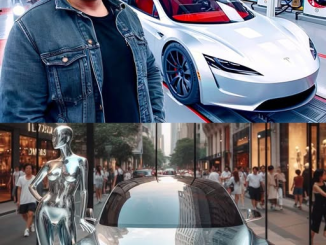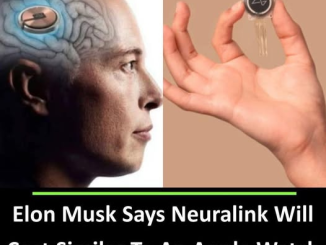
Before Elon Musk became a household name synonymous with Tesla, SpaceX, and the dream of colonizing Mars, his visionary mind was already hard at work—beneath the surface, quite literally. While many associate Musk’s futuristic transportation ambitions with his later U.S.-based ventures, few know that the seeds of one of his boldest concepts—the Hyperloop—were planted in the soil of his native South Africa.
Recently surfaced reports and insider accounts have shed light on a mysterious and largely undocumented project from Musk’s youth: a prototype of an underground transportation system built in secrecy beneath a private property. This early experiment, resembling what would later become known as the Hyperloop, offers a remarkable glimpse into the unrelenting curiosity and ambition of a young innovator who refused to be limited by the world around him.
A Vision Born in Pretoria
Growing up in Pretoria, South Africa, Elon Musk was known as a precocious and tech-obsessed youth who spent most of his time reading, coding, and building gadgets. But even among the extraordinary stories of his childhood brilliance, one project stands out.
According to local sources and early acquaintances of the Musk family, teenage Elon was fascinated by the inefficiencies of public transportation. At a time when the South African infrastructure was limited and outdated in many regions, Musk began sketching out ideas for a vacuum-based transit system that could drastically reduce travel time between destinations.
His goal? To test if humans could be transported in pressurized pods through underground tunnels at high speed—with minimal friction, maximum efficiency, and zero emissions.
The Underground Prototype
The reported location of Musk’s secret test site was a family-owned property on the outskirts of Pretoria. Collaborating with a few trusted friends and with the help of salvaged parts and makeshift materials, Musk is said to have constructed a small-scale vacuum tunnel—essentially the earliest form of what would become a Hyperloop.
The tunnel was reportedly no more than a few meters long and was powered by a rudimentary air propulsion system. However, for Musk, the purpose was not to build a working transport network but to experiment with the feasibility of reducing drag and using magnetic or pneumatic forces to accelerate a vehicle through a sealed tunnel.
Though the system was never made public and was dismantled shortly after Musk left South Africa for Canada and then the United States, it served as an important proving ground for ideas that would resurface decades later.
From Hidden Experiment to the Boring Company
Fast forward to 2016: Musk launches The Boring Company, a venture focused on reducing traffic by digging underground tunnels to accommodate high-speed transportation systems. Many saw this as a radical new development—but for Musk, it was merely a continuation of an idea he had been playing with for years.
His first major public proposal for the Hyperloop came in 2013, outlined in a 58-page white paper. While he invited other companies to develop it, the concept was undeniably Muskian: pressurized pods flying through vacuum-sealed tubes at speeds of up to 760 mph.
The Boring Company’s later projects in Las Vegas and planned systems in other cities are essentially large-scale evolutions of the same dream that began under a quiet patch of ground in South Africa.
A Pattern of Vision and Persistence
Musk’s early experiment highlights a key trait that defines his career: the refusal to accept limitations as fixed. While most people might consider high-speed underground travel a fantasy, Musk looked at the world’s problems—pollution, traffic, inefficiency—and asked, “What if we went under it all?”
It also demonstrates his lifelong method of rapid prototyping: build, test, iterate. Even without a formal lab or institutional support, Musk turned his ideas into tangible experiments from a young age.
Legacy and Inspiration
Today, the idea of a Hyperloop is being actively pursued by companies across the globe, some directly inspired by Musk’s original concept. But few realize that long before it became a Silicon Valley buzzword or a multi-billion-dollar investment opportunity, it was a teenage boy’s dream under the red earth of South Africa.
This little-known chapter in Elon Musk’s life not only enriches his mythos but serves as a powerful reminder to aspiring inventors and dreamers everywhere: innovation doesn’t begin in a lab—it begins with a question, a sketch, and the courage to dig a little deeper.


